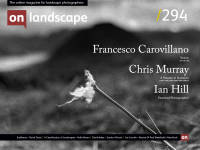David Travis chooses one of his favourite images

David Travis
David Travis is a landscape and visual art photographer based in Staffordshire. He is a committee member of the Royal Photographic Society’s Landscape Group and manages their critique, processing and print circles.
When starting out in photography, I was puzzled why people took black and white landscape images. Perhaps I could see a place for it in minimalist, long exposure seascapes where the palette is naturally monochromatic. But otherwise, it felt like an affectation, as if the photographer was trying a little too hard to give their images the sheen of “fine art”. Why would you take colour away from the landscape, I thought, when that’s not how the world looks?
Discovering this image from Nathan Wirth helped me realise that black and white landscape photography is not about showing how a landscape looks. It’s about showing how it feels.

